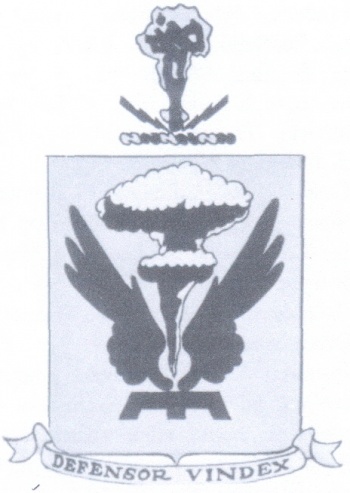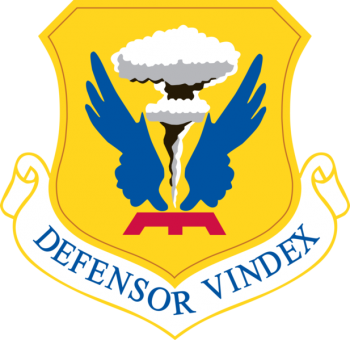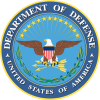509th Bombardment Wing, US Air Force: Difference between revisions
No edit summary |
|||
| (17 intermediate revisions by 2 users not shown) | |||
| Line 1: | Line 1: | ||
History: Established as 509 Bombardment Wing, Very Heavy, on 3 Nov 1947. Organized on 17 Nov 1947. Redesignated as:509 Bombardment Wing, Medium, on 1 Aug 1948; 509 Bombardment Wing, Heavy, on 2 Apr 1966; 509 Bombardment Wing, Medium, on 1 Dec 1969; 509 Bombardment Wing, Heavy, on 30 Sep 1990; 509 Bomb Wing on 1 Sep 1991. | |||
Operations: Maintained combat proficiency with B–29 bombers and F–51 and F–84 fighters, 1947–1948. Added air refueling capability in Sep 1948, initially with B–29M hose-type tankers and later with B/KB–29P boom–type tankers. Charged with strategic bombardment training and air refueling, 1949–1958. Deployed as a wing several times in the early 1950s, three times to England and once to Guam, and also deployed individual squadrons at other times. Temporarily had no refueling unit during 1958. Phased down for inactivation in late 1965, but was converted to a B–52/KC–135 wing in 1966. Supported Strategic Air Command (SAC) combat and contingency operations in Southeast Asia with KC–135 aircraft and crews, Nov 1966–Dec 1975, with B–52 aircraft and crews, Nov 1966–Sep 1969, and with B–52 crews, 1970. From 1 Apr to 1 Oct 1968 and 26 Mar to c. 20 Sep 1969, more than one-half of the wing was involved in SAC operations in Southeast Asia. From Nov 1969 to Dec 1970, the wing had no bombardment aircraft but continued refueling operations and performed FB–111 ground training. Resumed bombardment flying training in Dec 1970 and assumed FB–111 alert commitments from 1 Jul 1971 until Sep 1990. Won the SAC Bombing and Navigation competition and the Fairchild trophy in 1979, 1981, 1982, and 1983. Awarded the Sanders trophy for best air refueling unit in 1982. Moved on paper to Whiteman AFB, MO on 30 Sep 1990, but not manned until Apr 1993. Received first B–2 aircraft on 17 Dec 1993. Since 1993, furnished USAF’s only source of stealth heavy bomber capability. In 1999, flew nonstop bombing missions from Whiteman AFB, MO to Serbia and during Operation Allied Force. At the beginning of Operation Enduring Freedom, in October 2001, six of the wing’s B-2s flew the longest bombing missions in history, from Whitman to Afghanistan after flying across the Pacific and Indian Oceans. Each of those flights took more than 40 hours. After landing at Diego Garcia briefly, the six B-2s returned to Whiteman, after 30 more hours of flying, but with different crews. The wing also took part in Operation Iraqi Freedom in 2003, flying non-stop flights from Missouri to targets in Iraq. Wing B-2s also flew missions during Operation Odyssey Dawn in 2011. Maintained combat-ready resources to conduct conventional or nuclear operations. | |||
{|align | {| class="wikitable" | ||
|- style="vertical-align:top;" | |||
|[[File:bg509.jpg|350 px|center|Coat of arms (crest) of {{PAGENAME}}]] <br> (Historical - 509th Composite/Bombardment Group) | |||
|[[File:bw509.png|center|350 px|Coat of arms (crest) of {{PAGENAME}}]] <br> (Modern) | |||
| | |||
<center>''' {{uc:{{PAGENAME}}}} '''</center><br> | |||
'''Country''':United States[[File:Usa.jpg|60 px|right]]<br><br><br> | |||
|} | |||
| | {| class="wikitable" | ||
|+Official blazon | |||
|- | |||
|'''English''' | |||
|509th Composite/Bombardment Group - Or, in base a label of three points gules, surmounted by an atomic cloud proper, between a pair of wings conjonied in base azure.<br> | |||
Crest:On a wreath of the colors, or and azure, an atomic cloud or, with broken pattern gules, between two lightning bolts gules.<br> | |||
Motto:Defensor vindex. | |||
|} | |||
===Origin/meaning=== | |||
This was the Unit that dropped the Atomic Bombs on Japan in 1945, which is symbolised by the Atomic Cloud. Approved 10 July 1952. The Motto translates as "Defender - Avenger". | |||
[[Literature]]:Air Force Combat Units of World War II and Wikimedia Commons. Information also from https://www.afhra.af.mil/ | |||
{{us}} | |||
{{media}} | {{media}} | ||
[[Category:Military heraldry of the United States]] | |||
[[Category:Military heraldry of the United States]] | [[Category:Air Force heraldry]] | ||
[[Category: Air Force heraldry]] | [[Category:Granted 1952]] | ||
Latest revision as of 12:04, 22 October 2024
History: Established as 509 Bombardment Wing, Very Heavy, on 3 Nov 1947. Organized on 17 Nov 1947. Redesignated as:509 Bombardment Wing, Medium, on 1 Aug 1948; 509 Bombardment Wing, Heavy, on 2 Apr 1966; 509 Bombardment Wing, Medium, on 1 Dec 1969; 509 Bombardment Wing, Heavy, on 30 Sep 1990; 509 Bomb Wing on 1 Sep 1991.
Operations: Maintained combat proficiency with B–29 bombers and F–51 and F–84 fighters, 1947–1948. Added air refueling capability in Sep 1948, initially with B–29M hose-type tankers and later with B/KB–29P boom–type tankers. Charged with strategic bombardment training and air refueling, 1949–1958. Deployed as a wing several times in the early 1950s, three times to England and once to Guam, and also deployed individual squadrons at other times. Temporarily had no refueling unit during 1958. Phased down for inactivation in late 1965, but was converted to a B–52/KC–135 wing in 1966. Supported Strategic Air Command (SAC) combat and contingency operations in Southeast Asia with KC–135 aircraft and crews, Nov 1966–Dec 1975, with B–52 aircraft and crews, Nov 1966–Sep 1969, and with B–52 crews, 1970. From 1 Apr to 1 Oct 1968 and 26 Mar to c. 20 Sep 1969, more than one-half of the wing was involved in SAC operations in Southeast Asia. From Nov 1969 to Dec 1970, the wing had no bombardment aircraft but continued refueling operations and performed FB–111 ground training. Resumed bombardment flying training in Dec 1970 and assumed FB–111 alert commitments from 1 Jul 1971 until Sep 1990. Won the SAC Bombing and Navigation competition and the Fairchild trophy in 1979, 1981, 1982, and 1983. Awarded the Sanders trophy for best air refueling unit in 1982. Moved on paper to Whiteman AFB, MO on 30 Sep 1990, but not manned until Apr 1993. Received first B–2 aircraft on 17 Dec 1993. Since 1993, furnished USAF’s only source of stealth heavy bomber capability. In 1999, flew nonstop bombing missions from Whiteman AFB, MO to Serbia and during Operation Allied Force. At the beginning of Operation Enduring Freedom, in October 2001, six of the wing’s B-2s flew the longest bombing missions in history, from Whitman to Afghanistan after flying across the Pacific and Indian Oceans. Each of those flights took more than 40 hours. After landing at Diego Garcia briefly, the six B-2s returned to Whiteman, after 30 more hours of flying, but with different crews. The wing also took part in Operation Iraqi Freedom in 2003, flying non-stop flights from Missouri to targets in Iraq. Wing B-2s also flew missions during Operation Odyssey Dawn in 2011. Maintained combat-ready resources to conduct conventional or nuclear operations.
| (Historical - 509th Composite/Bombardment Group) |
(Modern) |
Country:United States |
| English | 509th Composite/Bombardment Group - Or, in base a label of three points gules, surmounted by an atomic cloud proper, between a pair of wings conjonied in base azure. Crest:On a wreath of the colors, or and azure, an atomic cloud or, with broken pattern gules, between two lightning bolts gules. |
Origin/meaning
This was the Unit that dropped the Atomic Bombs on Japan in 1945, which is symbolised by the Atomic Cloud. Approved 10 July 1952. The Motto translates as "Defender - Avenger".
Literature:Air Force Combat Units of World War II and Wikimedia Commons. Information also from https://www.afhra.af.mil/
US heraldry portal
This page is part of the US heraldry portal |
Heraldry of the World |
|
US heraldry:
|
Ecclesiastical Heraldry of the USA:
Military Heraldry: |
Contact and Support
Partners:
Your logo here ?
Contact us
© since 1995, Heraldry of the World, Ralf Hartemink 
Index of the site

















